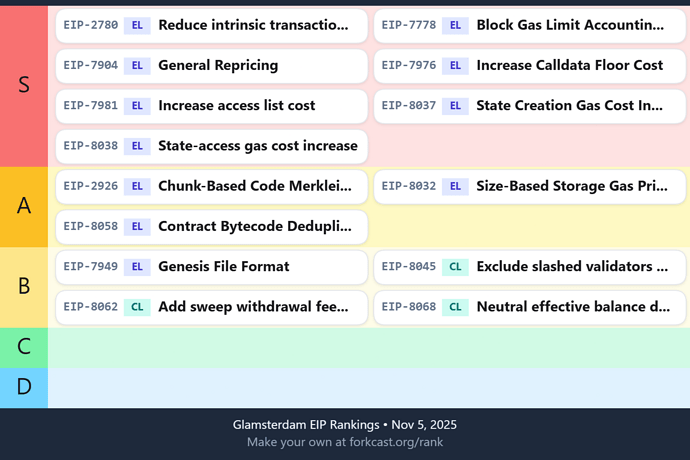Glamsterdam is the Ethereum upgrade that will follow Fusaka and is estimated for a release in 2026. The headlining features for this fork, chosen by community consensus, are enshrined Proposer Builder Separation and Block-level Access Lists.
The non-headlining features for this fork are now being chosen from the list of features proposed prior to the Oct 30th deadline. These features will be ones that are smaller in scope and don’t significantly delay the implementation of the selected headlining features.
Client teams, who generally have the most context for which features are compatible with headliners and each other, are asked to publish their opinions on which features to include. These opinions will be posted on Forkcast when available.
However, it’s crucial that core developers understand the extent to which some of these features impact various Ethereum communities, especially when there’s overwhelming need for a feature that may not be as visible in core development communities. This form is an opportunity for this support to be organized and voiced ahead feature selection.
If you’d like to share your opinion on feature inclusion, please fill this out - the feedback will be aggregated and presented in an upcoming All Core Dev call.
Proposed EIPs: Glamsterdam - Forkcast
